How to Grow Big Onions from Seed: These Tips Make a Huge Difference
OnionsThere are many reasons to start growing onions from seed. One compelling reason is to ensure big bulbs you can use in your delicious recipes. We'll give you all the crucial tips you need to grow big onions from seed to harvest.

Why Grow Onions from Seed?
1 - Bigger Onion Bulbs. Planning ahead and starting your seeds in the winter will give you the jump-start you need for bigger onion bulbs. And even if you didn’t get your seeds started earlier, you can still plant; you’ll just have a smaller bulb at harvest time.
2 - Fresh "Onion Sets." Starting onions from seed will give you fresh “onion sets,” not the dried-up ones that you see at gardening stores. They'll be healthy and ready to set outside for perfect timing. Onions are biannual, and sets sold in stores often go to flower and don’t produce a bulb.
3 - Save Money. Growing onions from seed is much cheaper than buying onion sets for full grown onions from the store.
4 - Pest Control. Another important reason for growing onions from seed is that it can keep you from infecting your garden with onion maggots, onion thrips, and white rot.
5 - Winter Growing. In locations with mild winters, you can plant onions in the fall, and they'll grow through the winter. For gardeners in cold locations, onions are one of the first garden seeds you can start indoors. Growing onions from seed will help fulfill your winter itch to get growing!

Starting Onions From Seed
The trick to producing large onion bulbs is to give them a headstart. You can start onion seeds indoors 10 to 12 weeks before the last frost date. And since onion seedlings can tolerate a light frost, they can be set outside 4 weeks before the last frost date.
Onion Seed Germination Tips
- Sprinkle onion seeds on top of moist seed starting mix.
- Cover with a light layer of soil or vermiculite of 1/4”.
- Moisten the seeds with a spray bottle.
- Cover with a humidity dome. A covering will hold in the moisture.
- It will take 7 to 14 days for the seeds to start sprouting. (5 to 10 days for leeks)
- The soil temperature can be between 55º to 70º F for germination. Check seed packets for specifics.
- When seeds start sprouting, place them under grow lights. They will need at least 14 hours of light each day.
- At this point, it is still important to keep the soil moist. Watering from below is the best method to keep the soil moist and avoid damaging the seedlings.

Onion seed planting tip: You don’t have to plant onions in individual pots/cells. You can separate them when they are starts.
Transplanting Onions
When the onion seedlings are 5 to 6 inches tall, they can be transplanted.
- Start by carefully loosening the soil away from the roots of the seedlings.
- Trim the roots of each to about 1".
- Trim the top of the onion. This will make the bulb produce more leaves. Each leaf is another ring on the onion bulb.
- Then, take each seedling and plant it 1” deep and 4” apart.
Transplant onions into loose soil that is full of organic nutrients. The loose soil allows the bulb to grow easily.

Be careful not to bury the seedlings too deep. While onions are considered a root vegetable, they have a fairly shallow root system and if planted too deeply, their bulb development will be stunted.
You can put onion transplants outside about 3 to 4 weeks before the last frost date.
Watch as Patty demonstrates how to prepare onion seedlings for transplanting.
Onion Growing Tips
The onion bulbs will eventually emerge from the soil. Don’t add more soil or cover them.
Onions prefer a less acidic soil pH of around 6 to 6.8. This range will also result in a better flavor.
Fertilize with a nitrogen-rich fertilizer until the bulbs start to emerge.
Weeds are a tough competitor for onions. Onions have shallow roots, so it's easy for the weed roots to take up the nutrients. Make sure your onion patch is free of weeds.
Each leaf is a ring of the onion. So, the larger the leaf, the larger the ring. If you want large onions, give them adequate space.

Long-day vs Short-day Onions
Bulbing onions are referred to as long-day or short-day. This refers to how much sunlight they need to form a bulb.
To get the biggest onion bulbs possible, you want your onions to have lots of leaves before they start developing a bulb.
For long-day onions, when daylight hours are 14 hours or longer, the onions will stop leaf formation and start forming a bulb.
Short-day onions start forming bulbs when the days are 10 to 12 hours long.
Long-day onions need 14 to 16 hours of sunlight to form a bulb.
Short-day bulbs need around 10 to 12 hours.
So, if your onions are just getting in the ground when daylight is 14 hours long, they will start developing bulbs. But without lots of leaves, the bulbs won't have many layers, which will result in smaller bulbs.
Generally, the long-day onions do better north of the 36th parallel, and the short-day ones will grow better in the south.
In climates with mild winters, short-day bulbs can be planted in the fall and harvested in spring.
When to Plant Onions
Onions can be started indoors 12 weeks before the last frost date. Plant in spring in northern locations. In southern locations, onions can be planted in the fall as long as there are 4 to 6 weeks of warm temperatures.
Where to Plant Onions
Onions need full sun so that their leaves can soak up the light and develop big layers of onion. Plant onions where they won’t be shaded by other plants.

Fertilizing Onions
You can use compost in your onion garden, but make sure it is well decomposed so that it doesn’t encourage root eating bugs.
Onions need extra nitrogen. Apply an application of fertilizer when you first transplant. Then continue applications every 2 to 3 weeks until the onion neck starts to feel soft.
Giving extra nitrogen later in the season can cause the onion to produce more green stems instead of bulb growth.
Bloodmeal and fish fertilizer are good options for onions.

When to Harvest Onions
Bulb onions can be harvested at various stages. From the first hint of a bulb to the giant 3 pounds. When onions are smaller, they will have a milder taste, and they are often called spring onions.
Spring Onions are onions that are harvested early in the growing season before they have formed a full bulb. They are grown from regular bulbing onions, not bunching onions. Spring onions have a milder flavor than their full-grown version.
To have onions for long-term storage, wait until the onions are fully developed to harvest. When an onion is fully developed and done growing, its top will start turning yellow and then fall over.
To harvest fully grown onions, choose a dry day. Loosen the soil with a garden fork and pull the onions out of the ground. Let them sit in the sun for a few days if it is going to be dry. Then allow the onions to cure before storing.

How to Store Onions
To store onions for long-term storage, wait to harvest them until the top turns yellow and brown and then flops over. Once they have reached this stage, they will be ready to harvest and cure.
Curing allows the outer layers of the onions to dry out before storing. Place the onions in a place where they will be dry and can cure for 2 to 3 weeks until the top of the neck is completely dry and the outer skin is brittle.
Good airflow is important so that the outer layers dry to a papery skin. If they are stored when wet, the onions will start rotting.
Don’t remove any outer layers at this point. You can brush off excess dirt, but don’t wash the onions. Once they have completely cured, then you can cut the tops off 1 to 2 inches above the bulb. You can also leave the tops on if you want to braid them.
Flowering onions will not keep as long as other onions. So use these first. Don’t plan on storing them long-term.
Stored onions will start sprouting if the temperature gets too high. Store in a cool place, 32º to 40º F.

Pests to Onions
Onion thrips - Don’t plant onions next to grains. Interplanting onions with carrots can be helpful since onion thrips will also attack carrots but not do as much damage. Planting from seed can keep you from infecting your soil with thrips.
Onion maggots - Rotate crops and don’t plant onions in the same spot every year. Onion maggots are host specific, which means they only attack plants in the onion family. If the hatching maggots don’t find a food source, they will die.
White Rot - White rot comes from a soil-borne fungus. Starting from seed will ensure that you aren’t planting infected starts. Plant your seeds in sterile potting soil.
For home gardens, the use of mulch and planting with a variety of other vegetables, herbs, and flowers, can have a positive effect. Don’t use toxic chemicals that kill the natural enemies of onion pests. Also, keep weeds away, so they don’t compete with the onions.

Flowering Onions
Onion flowers are beautiful, but if you want a large onion bulb, you don’t want your onions to flower. If an onion flowers, it has stopped growing a bulb and is going to seed. An onion usually takes 2 growing seasons to go to seed. So if temperatures fluctuate enough that the onion goes dormant and then starts growing again, it will think that it has gone through a whole growing season. Once your onion starts flowering, it’s stopped growing, so go ahead and harvest it. And use it soon since it won’t store for long.
Once you start growing onions from seed, you won’t look back. Onions are simple to grow and need to get started early. So, if you’ve been itching to get something growing, start your onion seeds.
Onions are the staple ingredient that needs to be grown in every vegetable garden. Knowing how to grow onions from seed will give you a reliable harvest of big onion bulbs that will become the base of many delicious recipes.
Now that you know how easy it is to grow onions, it’s time to add some to your vegetable garden.
Happy Growing!


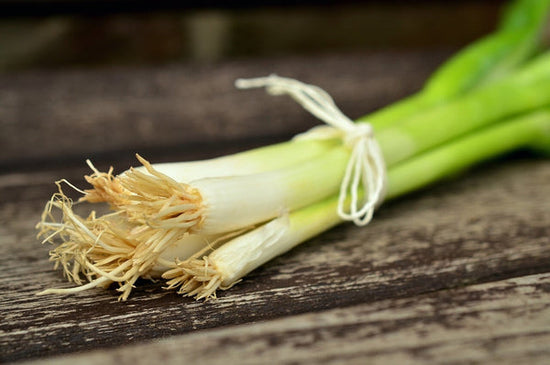

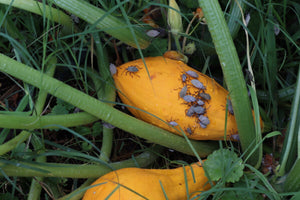
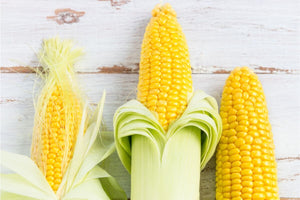
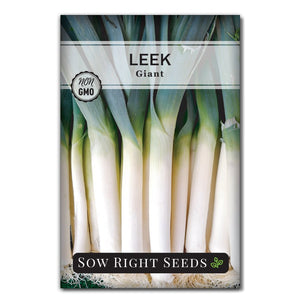
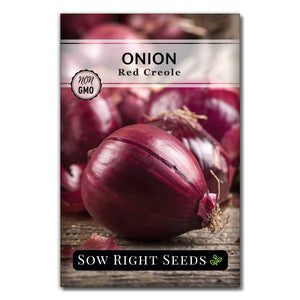
Leave a comment